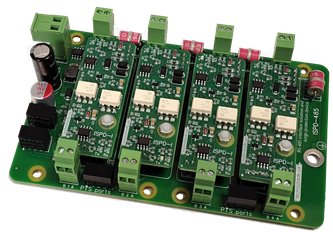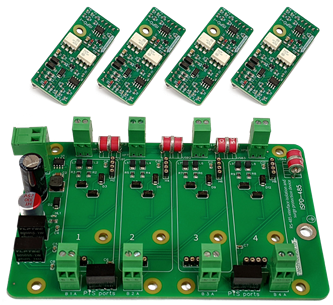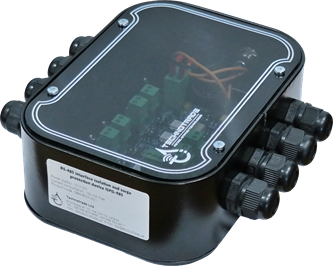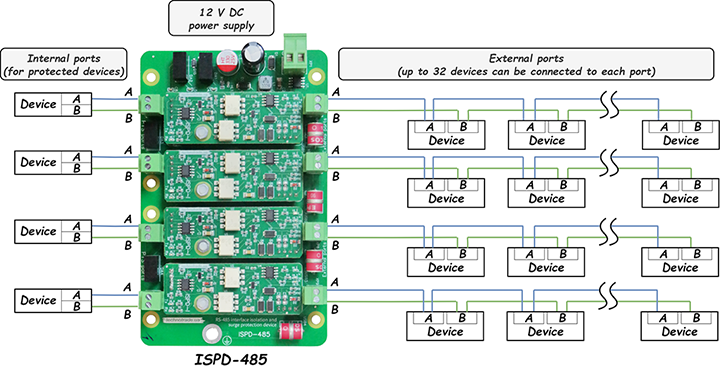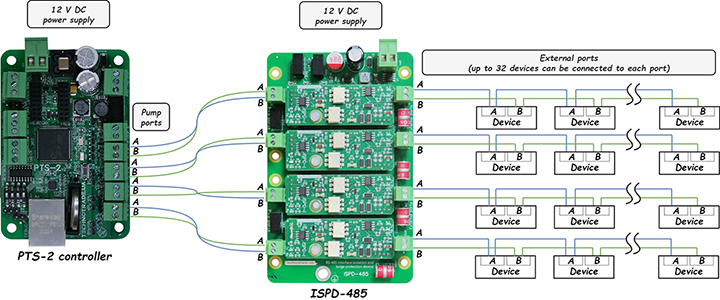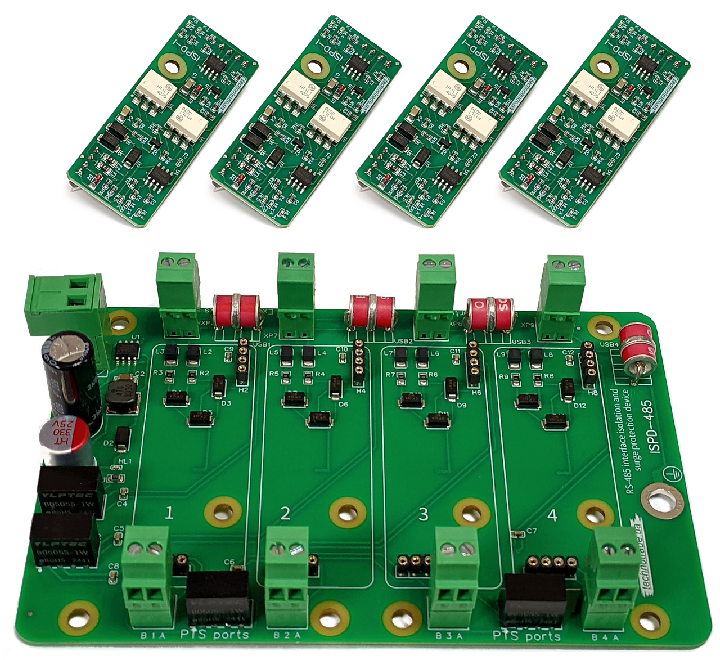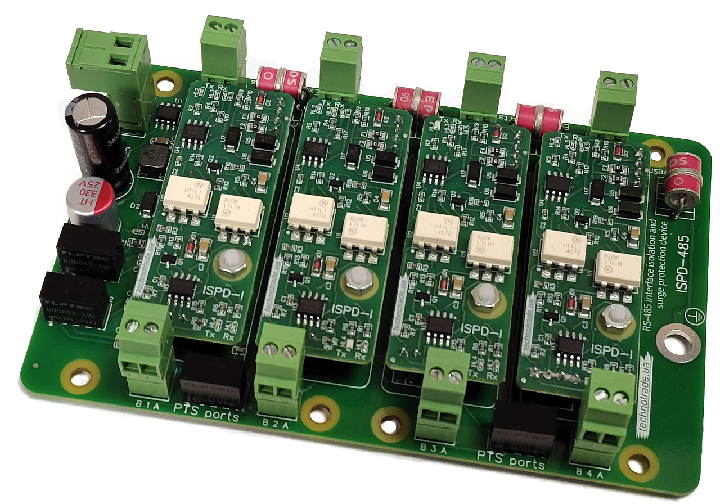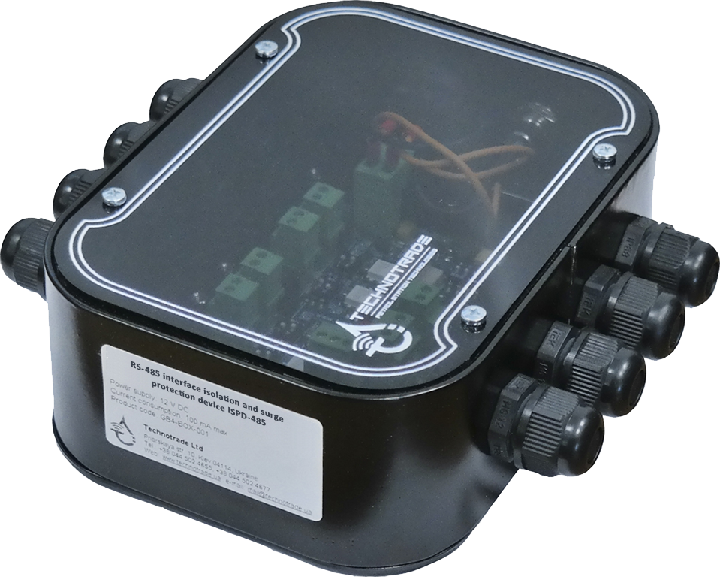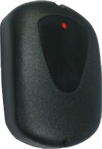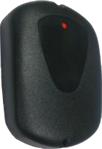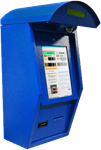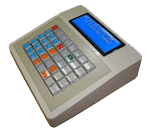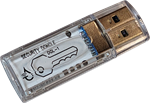ISPD-485 device for RS-485 interface isolation and surge protection
ISPD-485 device is used for isolation and surge protection of RS-485 interface lines. The ISPD-485 is installed in the RS-485 line to protect equipment from high-voltage impulse interferences caused by:
- lightning discharges
- radiation from industrial equipment
- various electromagnetic fields
ISPD-485 stands operation at short-term voltage surges of 4500 Volts. Protection is provided due to application of the following components in the electronic circuit board of the ISPD-485 device:
- gas discharge tube installed in each RS-485 channel – provides primary protection, accepts and dissipates powerful impulse interference. When triggered, it provides very low impedance and high current carrying capacity, safely diverting the interference pulse to ground
- TVS diode installed in each RS-485 channel – protects the device input from fast nanosecond interferences and electrostatics at a time when the gas discharge tube has not yet had time to trigger due to its inertia
- optical isolation of each RS-485 channel –prevents the high-voltage impulse interferences from passing further along the circuit
- galvanic isolation for power supply – reduces interferences and protects equipment from damage and people from electric shock
Downloads
Technical characteristics #
| PARAMETER | VALUE |
|---|---|
| Power supply voltage | 12 V DC |
| Current consumption | 100 mA max |
| Number of independent channels | 4 |
| Max current for each channel | 200 mA |
| Proved operation at short-term voltage surges | 4.5 kV |
| Temperature range | from -40°C to +80°C |
| Weight | 120 g |
| Overall dimensions | 135 x 85 x 25 mm |
Connection scheme #
The ISPD has 4 independent ports. Each port has 2 sides:
- side, where protected device is connected (this side is protected from high-voltage impulse interferences)
- side where other external devices are connected, each port allows to connect up to 32 external devices
Notes:
- ISPD-485 device has 4 independent protection lines
- make sure to make connection correctly:
- ports named PTS are intended for to connection to the protected equipment
- ports named External are intended for to connection to the RS-485 lines
- earthing terminal is intended for connecting the ground. Connecting to the ground is mandatory for protecting of the RS-485 ports!
Connection scheme to PTS-1/PTS-2 controllers #
The ISPD-485 can work in different areas. One of its applications is installation on petrol stations in between the PTS-1 controllers / PTS-2 controllers and other forecourt equipment (fuel dispensers, ATG probes, price boards, readers, others) in order to isolate and protect input circuits of forecourt controllers from external harmful influences.
The PTS-1 controller has 4 pump ports with RS-485 interface, each of them can be connected to a separate port in ISPD-485 device. In addition to protection from high-voltage impulse interferences, the ISPD-485 makes each port more powerful as it allows up to 200 mA for each of the ports.
The PTS-2 forecourt controller has 4 pump ports with RS-485 interface, each of them can be connected to a separate port in ISPD-485 device. In addition to protection from high-voltage impulse interferences, the ISPD-485 makes each port more powerful as it allows up to 200 mA for each of the ports.
Complete set #
The ISDP-485 device consists of the mainboard and removable ISPD-I modules. The ISPD-I modules are made simple and cost-effective to allow quick and easy replacement in case of its damage:
Order information #
The ISPD-485 device can be supplied in 2 main forms:
- in a view of electrical board (order code: ISDP-485)
- in a view of a metal box with cables inputs and a power switching button (order code: ISPD-485-BOX)
(click on image to enlarge)
(click on image to enlarge)
Ask YOUR questions about
"ISPD-485 device for RS-485 interface isolation and surge protection"
Other products of section:
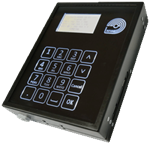
|
Pinpad self-service terminal for petrol stations
Self-service terminal Pinpad is a terminal intended for provision of self-service at petrol stations. It has wired/wireless communication and is equipped with a built-in display, keyboard, RFID-reader (Mifare/Em-Marine standards) and Wi-Fi module, which allows it to be used for following purp
